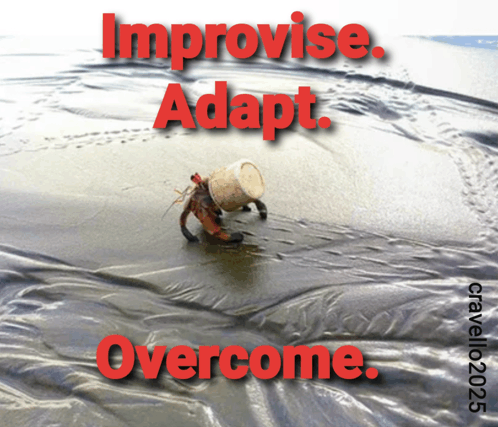6 Common Pitfalls in Agile Projects and How to Avoid Them
 Rajni Rethesh
Rajni Rethesh
Agile project management has become the gold standard for teams aiming for flexibility, faster delivery, and continuous improvement. While Agile methodologies promise many benefits, they’re not without their challenges. Teams can fall into common traps that undermine their success if they’re not careful.
In this blog, we’ll discuss six common pitfalls in Agile projects and provide actionable tips on how to avoid them.
Also read: Streamlining Agile Project Management with Jira: A Practical Feature Guide
Issues Technical Project Managers face in Agile Projects
1. Lack of Clear Requirements and Backlog Management

One of the biggest challenges in Agile projects is having vague or constantly changing requirements. Learn more: Change Management in Agile Environments: Handling Organizational Shifts
Without clear requirements, your team might struggle to prioritize work, leading to confusion and misalignment of project goals. If your backlog isn’t managed well, it can become cluttered, and your team may waste time on low-priority tasks.
How to Avoid It?
Regularly groom your backlog with your product owner and stakeholders to ensure clarity and alignment.
Break down large tasks into smaller, more manageable user stories that provide clear deliverables.
Ensure your backlog reflects business priorities and focus on delivering customer value.
Pro Tip: Tools like Middleware Jira Plugin can help with backlog management. It helps gather all the software engineering productivity insights right within Jira in seconds.
2. Failing to Adapt to Changes Quickly

Agile is all about being responsive to change. However, some teams get stuck in their processes and find it difficult to adapt when project requirements or market conditions change.
How to Avoid It
Encourage a culture of flexibility where changes are embraced as opportunities rather than disruptions.
Regularly revisit your project goals and adjust your approach if needed.
Hold sprint reviews and retrospectives to assess what’s working and what’s not.
3. Overloading the Team with Work

While Agile encourages frequent iterations and a fast pace, teams often fall into the trap of over-committing during sprints. This can lead to burnout, missed deadlines, and a decline in team morale.
How to Avoid It
Be realistic about how much work can be completed during each sprint. Make sure to consider the team's capacity.
Avoid "hero" culture by encouraging a collaborative approach to work instead of relying on a few individuals to do everything. Learn more: Cross-Functional Collaboration: Aligning Engineering, Design, and Product Teams for Success
Review your velocity at the end of each sprint to understand how much work your team can handle comfortably.
4. Lack of Effective Communication

In Agile projects, clear communication is essential. Without it, misunderstandings can arise, leading to wasted effort, missed deadlines, and frustration among team members. The team may not be aligned, and stakeholders might not get the information they need to make timely decisions.
How to Avoid It
Hold daily stand-ups to ensure everyone is aligned on progress and obstacles.
Foster open communication between team members and stakeholders through regular check-ins and feedback loops.
Use collaboration tools like Jira to track progress and ensure transparency.
Also read: Streamlining Agile Project Management with Jira: A Practical Feature Guide
5. Neglecting Technical Debt

In the rush to deliver functionality in Agile projects, technical debt can accumulate. While getting features out quickly is a key Agile principle, ignoring quality and code maintenance can lead to long-term issues like increased bugs, system instability, and poor scalability.
How to Avoid It
Prioritize refactoring and technical improvements during your sprints, alongside delivering new features.
Set aside dedicated time for addressing technical debt in each sprint, ensuring it's part of your normal workflow.
Regularly review your codebase and make sure that your team adheres to best practices and coding standards.
6. Skipping Retrospectives
In the hustle to get work done, some Agile teams skip retrospectives or hold them ineffectively. Retrospectives are key to identifying improvement areas and making necessary adjustments to your workflow. Skipping them means missed opportunities to learn and evolve.
How to Avoid It
Make retrospectives a regular part of your sprint cycle, ensuring they are a safe space for team feedback.
Focus on actionable takeaways during retrospectives, and prioritize one or two improvements to focus on for the next sprint.
Encourage a culture of continuous improvement where feedback is taken seriously and implemented.
Conclusion
Agile is a powerful methodology that, when done right, can significantly improve project delivery and team collaboration. However, like any framework, it comes with its challenges. By recognizing these common pitfalls and implementing strategies to avoid them, you’ll be well on your way to delivering better results faster.
Ready to Optimize Your Agile Workflow?

If you're looking to streamline your Agile process and ensure smooth communication and reporting across teams, the Middleware Jira Plugin is the perfect tool to enhance your Jira experience. It integrates Jira with other tools, making project management and reporting more seamless, efficient, and accurate.
Click here to learn more about the Middleware Jira Plugin and start avoiding these pitfalls today!
FAQs
What is important to assess to avoid common pitfalls with agile adoption?
It's important to assess team readiness, clarity of roles, stakeholder engagement, and the flexibility of existing processes to ensure smooth Agile adoption.
What is the 3-5-3 rule in Agile?
The 3-5-3 rule refers to structuring an Agile team with 3 key roles (Product Owner, Scrum Master, and Development Team), 5 core values, and 3 key ceremonies (Sprint Planning, Daily Standups, and Sprint Retrospectives) to maintain focus and efficiency.
What is the most common failure of Agile?
The most common failure of Agile is poor communication, either within the team or between the team and stakeholders, which leads to misalignment and unmet goals.
How to identify risks in gile projects?
Risks can be identified by regularly conducting risk assessments during sprint retrospectives, using tools like risk matrices, and by keeping an open dialogue within the team to highlight potential challenges.
Subscribe to my newsletter
Read articles from Rajni Rethesh directly inside your inbox. Subscribe to the newsletter, and don't miss out.
Written by

Rajni Rethesh
Rajni Rethesh
I'm a senior technical content writer with a knack for writing just about anything, but right now, I'm all about technical writing. I've been cranking out IT articles for the past decade, so I know my stuff. When I'm not geeking out over tech, you can catch me turning everyday folks into fictional characters or getting lost in a good book in my little fantasy bubble.


